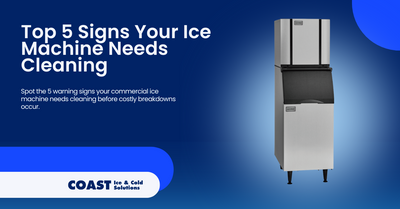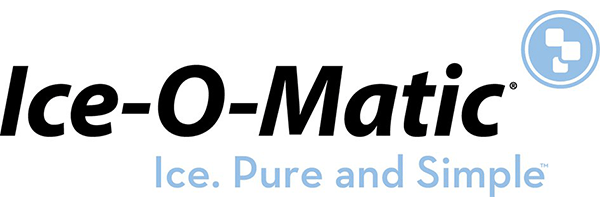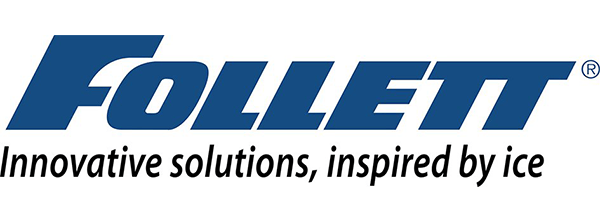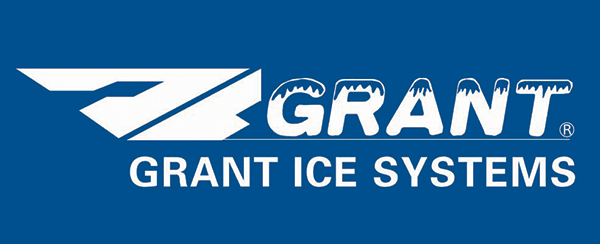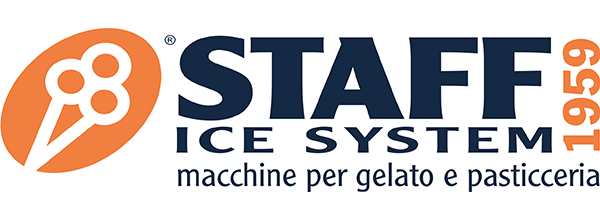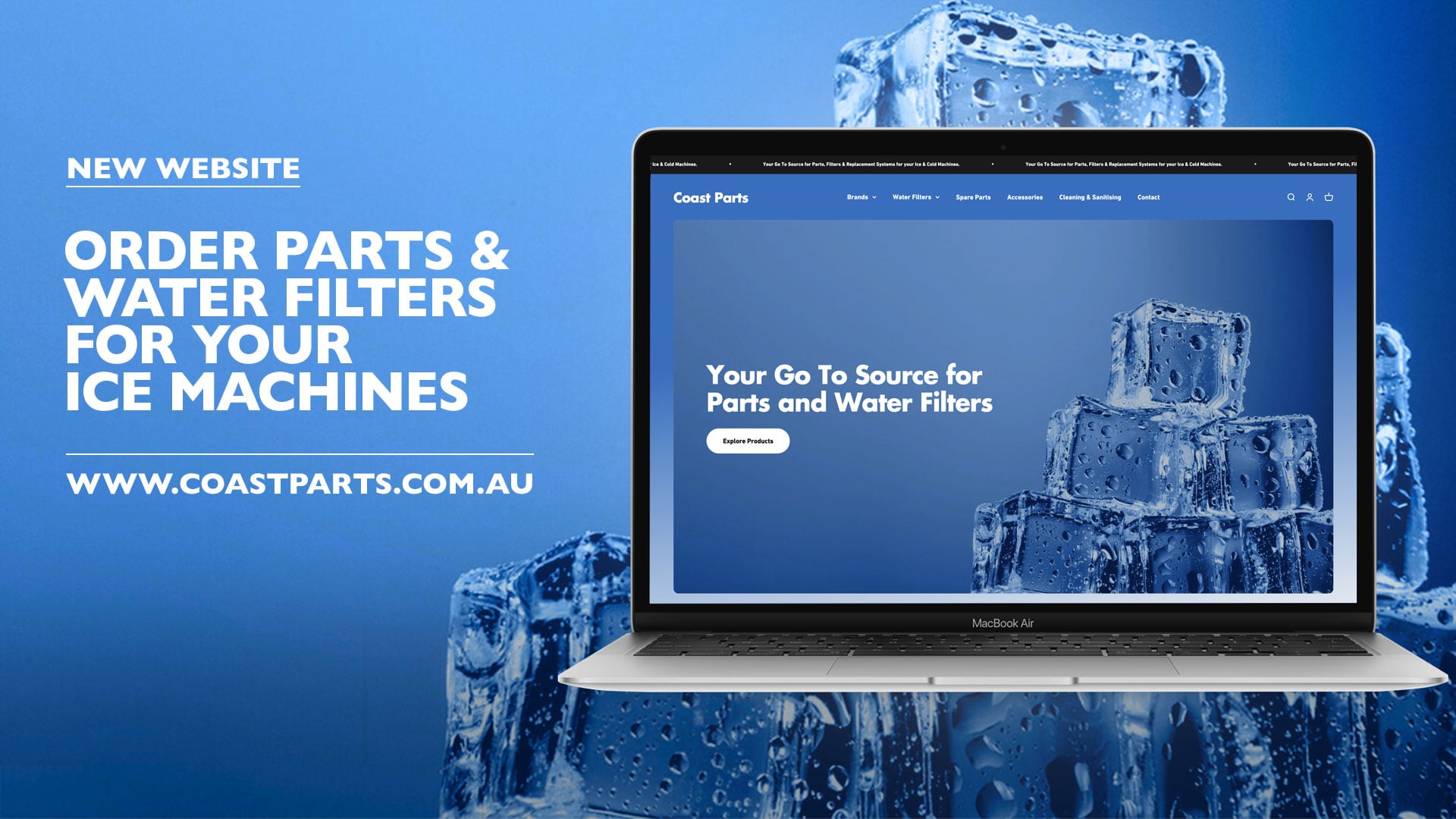Top 5 Signs Your Ice Machine Needs Cleaning
The Coast Team on 13th May 2025
Running a successful business means keeping a sharp eye on every detail – and your commercial ice machine is no exception. While these workhorses quietly produce ice day and night, they're also sending subtle (and sometimes not-so-subtle) signals when they need attention. Recognising these ice machine cleaning signs early can save you from costly breakdowns, health code violations, and disappointed customers.
Whether you're managing a bustling Melbourne café or overseeing a Sydney restaurant, knowing when your ice machine needs cleaning is crucial for maintaining food safety standards and equipment longevity. Let's explore the five most obvious visual cues that it's time to give your ice machine some TLC.
1. Visible Slime or Pink/Black Discolouration
What You'll See: Pink, black, or grey slime on interior surfaces, particularly around the ice drop zone, water lines, or inside the storage bin. This biofilm might appear as a thin, slimy coating or develop into more obvious patches.
Why It Happens: The warm, moist environment inside ice machines creates perfect conditions for bacteria, yeast, and mould growth. Pink slime (often Serratia marcescens) is particularly common in ice machines and thrives in damp conditions.
What It Means: This is the most urgent cleaning sign. Biofilm not only contaminates your ice but can also harbour dangerous pathogens. If you spot any discolouration, your machine needs immediate cleaning and sanitisation.
Action Required: Stop using the machine immediately, discard all ice, and perform a thorough cleaning cycle. For machines like the Ice-O-Matic CIM1125, which features easy-clean plastic food zones and smart LED indicators for cleaning reminders, following the manufacturer's cleaning protocol is essential.
2. Cloudy, Soft, or Malformed Ice Cubes
What You'll See: Ice that appears cloudy or white instead of crystal clear, cubes that are smaller than usual, soft or mushy texture, or ice that's clumping together in the bin.
Why It Happens: Scale buildup on the evaporator plate interferes with proper heat transfer, while dirty water systems introduce impurities into the freezing process. Mineral deposits can also affect the ice formation cycle timing.
What It Means: Your ice quality is compromised, affecting both appearance and taste. Customers will notice cloudy ice in their drinks, potentially damaging your establishment's reputation.
Action Required: Check and clean the water filtration system, descale the evaporator plate, and ensure proper water flow. Regular cleaning prevents these issues from developing.
3. Unusual Odours Coming from the Machine or Ice
What You'll See (or Smell): Musty, mouldy, or chemical-like odours emanating from the ice machine or the ice itself. The smell might be subtle at first but becomes more noticeable as the problem worsens.
Why It Happens: Bacterial growth, mould spores, or accumulated organic matter in the water system produce distinctive odours. Stagnant water in lines or improper drainage can exacerbate the problem.
What It Means: Your ice is absorbing these odours, directly impacting the taste and quality of beverages. This is often accompanied by other cleaning signs like visible contamination.
Action Required: A comprehensive cleaning with appropriate solutions like Safe Clean Plus Liquid, specifically designed for ice machines, will eliminate odour-causing bacteria and restore fresh-tasting ice.
4. Decreased Ice Production or Slow Freezing Cycles
What You'll See: Noticeably less ice in the bin during peak times, longer cycles between harvests, or the machine running constantly without producing adequate ice.
Why It Happens: Scale buildup acts as insulation on the evaporator, reducing heat transfer efficiency. Clogged water filters restrict flow, while dirty condensers cause the system to work harder.
What It Means: Your energy costs are increasing while ice production decreases – a double hit to your bottom line. The machine is working overtime to compensate for reduced efficiency.
Action Required: Clean all components including the condenser coils, replace water filters, and descale the evaporator. Modern machines often include diagnostic features to help identify specific issues.
5. Visible Scale Buildup or White Residue
What You'll See: White, chalky deposits on the evaporator plate, water distribution system, or inside the ice bin. Scale might appear as a thin film or thick, crusty buildup.
Why It Happens: Hard water contains dissolved minerals (primarily calcium and magnesium) that precipitate out during the freezing process, accumulating on surfaces.
What It Means: Scale acts as an insulator, reducing ice production efficiency and potentially damaging components. It also provides a surface for bacterial growth.
Action Required: Regular descaling is essential, especially in areas with hard water. Use manufacturer-approved descaling solutions and consider installing water softening systems to prevent future buildup.
Creating an Effective Cleaning Schedule
Recognising these ice machine cleaning signs is just the first step. Implementing a proactive cleaning schedule prevents these issues from developing:
Daily Tasks
- Wipe down exterior surfaces
- Check and clean the ice scoop
- Inspect for any visible contamination
- Monitor ice quality and production levels
Weekly Tasks
- Clean and sanitise the ice storage bin
- Check door seals and gaskets
- Inspect water filters for clogs
- Clean air filters on air-cooled models
Monthly Tasks
- Deep clean and sanitise all components
- Descale the evaporator and water system
- Check and clean the condenser
- Verify proper drainage
Professional Maintenance
While regular cleaning by staff is essential, professional servicing ensures thorough maintenance of components like:
- Refrigeration systems
- Electrical connections
- Control boards and sensors
- Water pumps and valves
The Cost of Neglecting Cleaning Signs
Ignoring these visual cues can lead to:
Health Code Violations: Food safety inspectors take ice machine hygiene seriously. Contaminated ice can result in fines or closure.
Equipment Failure: Neglected machines break down more frequently, with repairs often costing more than regular maintenance.
Customer Complaints: Poor ice quality affects drink taste and appearance, potentially driving customers away.
Increased Operating Costs: Dirty machines use more energy and water while producing less ice.
Liability Issues: Contaminated ice can cause illness, potentially resulting in legal action.
Best Practices for Australian Businesses
Australian businesses face unique challenges with ice machine maintenance:
- High Humidity: Coastal areas experience higher humidity, increasing mould and bacteria growth risk
- Hard Water: Many regions have mineral-rich water requiring more frequent descaling
- Strict Standards: Australian food safety regulations demand rigorous hygiene practices
- Peak Summer Demand: Machines work harder during hot months, requiring extra attention
Choosing Cleaning-Friendly Equipment
When selecting ice machines, consider models designed for easy maintenance. Features to look for include:
- Antimicrobial components
- Easy-access cleaning points
- Automatic cleaning cycles
- Clear diagnostic indicators
- Removable, dishwasher-safe parts
Modern machines increasingly incorporate these features, making maintenance more manageable for busy establishments.
Conclusion
Your ice machine communicates its cleaning needs through clear visual signs. By staying alert to these indicators – from visible slime to scale buildup – you can maintain equipment efficiency, ensure food safety compliance, and protect your business reputation.
Regular cleaning isn't just about preventing problems; it's about maintaining the quality standards your customers expect. Whether you notice one sign or several, taking prompt action demonstrates professionalism and care for both your equipment and clientele.
Don't wait for multiple warning signs to appear. Establish a proactive cleaning routine, train staff to recognise these indicators, and consider professional maintenance partnerships. Your ice machine is a vital business asset – treating it well ensures it continues serving your needs reliably.
Remember, clean ice isn't just frozen water – it's a reflection of your commitment to quality and safety. Keep watching for these signs, and your ice machine will reward you with years of trouble-free service.
Need professional cleaning supplies or maintenance advice for your ice machine? Coast Distributors offers a complete range of cleaning solutions and expert guidance to keep your equipment in peak condition. Contact us today to discuss your needs.
Phone: 1300 423 423
Email: sales@coastdistributors.com.au

